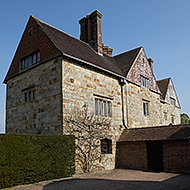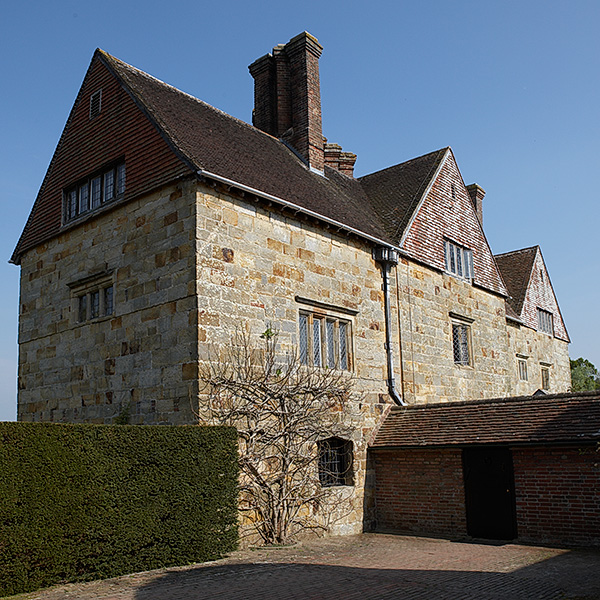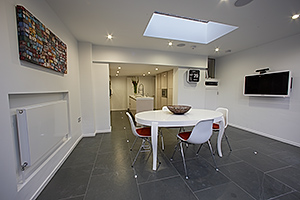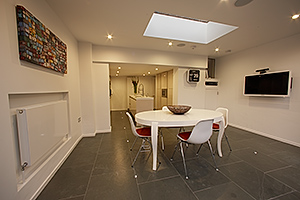Why should you use a Photographer?
There is an old saying that tells us "A person who owns a camera is a photographer and a person who owns a piano, owns a piano". I know what a house looks like and I know how a pen and paper work, that doesn't make me an architect. The person who owns the camera can press the button and create a snap just as the piano owner can press a key and get a perfect note from the instrument. This all relies on the abilities of the people behind the scene to set up and tune these instruments so as they behave to the best of "their" ability. Creating a melody requires training, practice and skill, just as creating a good photograph requires more than knowing how to just press a button. So I guess the question now is "Do you need a snap or do you need a photograph?"
What do you want to use the image for?
If the image is only for internal use and you are never going to use it for anything important then a snap is fine. However if anybody outside the company is going to see it then it has to be a photograph as it is representing "What you do". More importantly than just being "What you do" it is showing the potential customer the best you are capable of, otherwise why show it to them. So if the photograph is mediocre then you are saying that about your own work.
First Impressions
Images on your website are usually the first thing your customer sees. Images grab the attention; text comes later, so the first impression will be made by your choice of images. I personally feel that a website is a sales document, in many cases the first contact between you and the client and needs to showcase the best work you can do and display it in the best way possible. If it's not your best work, or it isn't showing your project to its best effect why is it on your website?
Take a moment to think about some common phrases regarding pictures and photography.
- A picture is worth a thousand words.
- Not everybody trusts paintings but people believe photographs.
- A photograph never lies.
The last one is not true.
Saying more than "I was there"
A photograph tells the story that the photographer wants it to tell. By carefully selecting the shooting position I can add or remove items from the image, change the relationship between objects or draw the attention towards the area I want the viewer to focus on. By dressing the scene you can change the appearance and message the image conveys. If you have an expensive car driving past then it's an affluent area, a parent pushing a pram in the background and it's pro-community / family, bicyclist riding past and it's green friendly, bus waiting at a stop and you have good transport infrastructure. We haven't even looked at the building yet and we have already got a feel for the area. A photograph tells the story that you want to convey, a snap.... well that just says you were there.
Getting the right people to do the right job
If you want to design a building, you get an Architect, to build it you employ a bricklayer, an electrician for the wiring and a plumber for ... well the plumbing. Who do you send to take the photographs? This shouldn't be a difficult question once you realise there is a difference between a photograph and a snap. Whenever a professional creates something, whether it be a photograph, a building design or landscaping a garden you follow a mental workflow. As you become more competent the pre-exposure workflow gets longer and includes more choices and steps. What started off as "can I see the object" ends up as a complicated workflow with many choices culminating in changing the camera settings, waiting for the light and picking the right moment. Now you have a digital negative which needs to be worked on in the right way to get the best results, time for the post-exposure workflow.
Cost...how much?
Without doubt I am biased; I want you to use my services because it puts food on my table and keeps a roof over my head. More than that, I want you to keep using my service which means I have to provide good value for money and a product you are happy with that keeps you coming back for more. If the image is part of a Verified View / AVR for a contentious planning submission then I need to work with your CGI team so as to make the process flow as smoothly as possible. This includes documenting the shoot from the camera and lens being used to the location and height of the tripod for the Verified Views Method Statement. If it's for your website then working with the web designer I provide the image to the size and specification that they require as part of my post-processing. This means that they can just drop the image into the website without any manipulation required; the job they are good at is creating websites not manipulating photographs.
When it goes wrong
I would love to use examples from websites I've seen but fortunately for the guilty copyright protects them. However to give you a few ideas here are some examples of common problems caused by people with cameras trusting their machines or having the wrong person doing the job. The correct picture is shown on the left and the "faulty" one on the right.
Size isn't everything
The picture on the left is the correct size for the space it takes up on the page; it's nice and sharp without any obvious distortions. The picture on the right however is being resized "down" to fit into the allocated space. Depending on which browser you are using you may see a strange pattern appearing on the gables and shed roof, or the right most image may just look soft and out of focus. This pattern is called moiré and is an interference pattern created by the browser when it tries to resize the image. The image on the left is 9 times smaller than the image on the right. This problem happens when you give the web developer an image and they use it at the size supplied.


What time of day?
Another common problem occurs when you trust the camera to do the right thing. For example you are shooting a picture inside and the camera doesn't realise and thinks that it's just normal daylight. So it exposes the picture for a sunny day and you are shooting in a halogen / tungsten / fluorescent lit space, so everything ends up having a green or red hue depending on the light source. The picture on the left is colour balanced so that the white items in the room (radiator, walls, table etc) are actually white. The picture on the right thinks that it's being lit by natural light so only the skylight appears white whilst everything else has a "rosy" pink shade.
Interested in learning more?
If you've looked through my site and have any questions, I'd be glad to help you. You can contact me on my mobile on 07801 103635 or send me an E-mail and I will get back to you as soon as I can.



